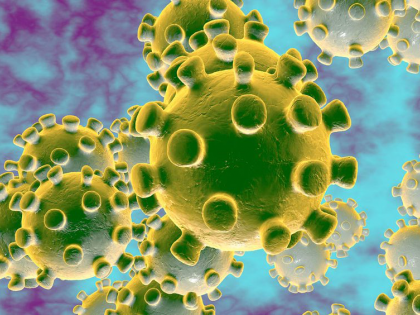COVID-19 KP.3 Variant: All You Need to Know About This New Rapidly Spreading Strain
By Lokmat English Desk | Updated: July 19, 2024 22:20 IST2024-07-19T22:19:08+5:302024-07-19T22:20:25+5:30
The outbreak of the coronavirus, which has spread worldwide, is not yet completely over. COVID-19 remains present in many ...

COVID-19 KP.3 Variant: All You Need to Know About This New Rapidly Spreading Strain
The outbreak of the coronavirus, which has spread worldwide, is not yet completely over. COVID-19 remains present in many countries and is becoming increasingly concerning. In the United States, the number of corona patients has started to rise again with the emergence of new variants, FLiRT and KP.3. Many countries view this as a warning sign of a potential new danger.
The White House recently announced that during his trip to Las Vegas on Wednesday, President Joe Biden tested positive for COVID-19 and is experiencing mild symptoms. Meanwhile, the new KP.3 variant is spreading rapidly in the U.S., with the daily average number of infections rising to 307 by the end of the first week of July.
According to the latest data from the Centers for Disease Control and Prevention (CDC), between June 23 and July 6, 36.9 percent of COVID-19 cases in the U.S. were attributed to the KP.3 variant. So, what is the KP.3 variant, and what symptoms are associated with it? How can individuals protect themselves from this concerning variant?
Reports indicate that the KP.3 variant shares similarities with the JN.1 variant of the coronavirus and also has characteristics in common with the FLiRT variants KP.1 and KP.2. However, the CDC has yet to provide detailed information on the specifics of the KP.3 variant. Medical experts at the CDC are actively monitoring this variant to gather more information.
The KP.3 variant has symptoms similar to those exhibited by the JN.1 variant. A person infected with this variant may experience symptoms such as fever or chills, cough, difficulty breathing, fatigue, muscle or body aches, headache, loss of taste or smell, sore throat, nausea or vomiting, and diarrhea. The CDC advises seeking emergency medical care for severe symptoms, which include difficulty breathing, persistent chest pain or pressure, confusion, trouble staying awake, and bluish, brown, or yellow coloration of the skin, lips, or nails.
The World Health Organization (WHO) has urged vigilance not only in the U.S. but across many countries due to the rising number of COVID-19 cases. The organization has emphasized that the pandemic is not over yet. Those planning to travel are recommended to take precautions against COVID-19, get vaccinated, wear masks, and get tested if they have any doubts.
A recent statement from the World Health Organization highlighted that the positivity rate of COVID-19 (SARS-CoV-2) has increased from 5.6% to 7.1% across 84 countries between May 27 and June 23. Following this, WHO Director-General Tedros Adhanom Ghebreyesus noted with concern that vaccination rates among healthcare workers and individuals over the age of 60 are declining alarmingly.
Open in app